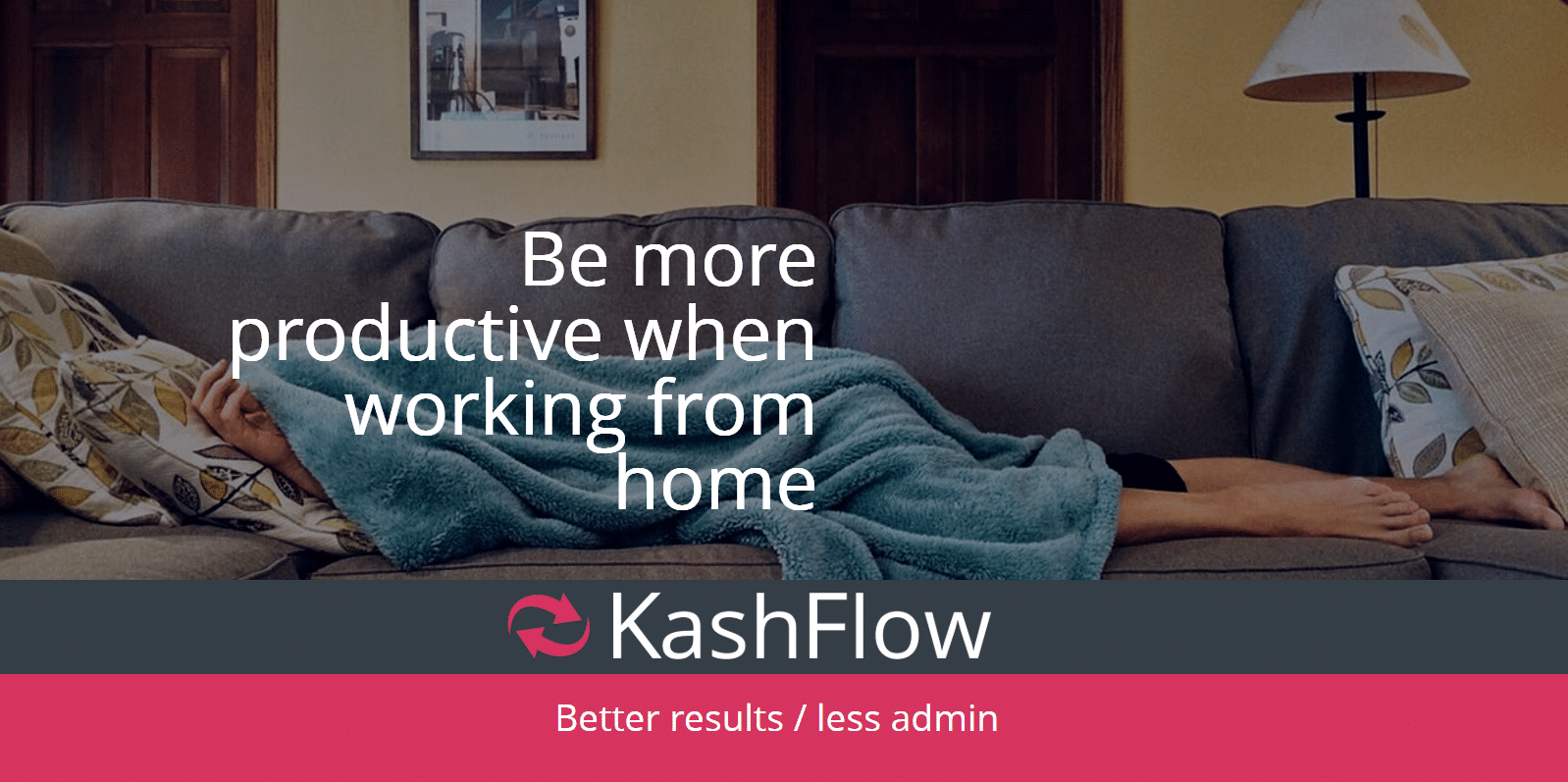The KashFlow Guide to Working from Home
One of the best ways to keep overheads down in the early days of running a business is to work from home. But did you know you can save some more money by claiming tax relief?
It’s true! HMRC allow you to claim tax relief for home expenses if you run your own business from home. The trick is to make sure you use a “reasonable” method to calculate your expenses – one that we cover in this blog…
How to calculate your work from home expenses
There are a few steps involved in working out your home expenses.
Step one
The first one is to work out how many rooms you have. HMRC class any “normal living space” as a room, so this normally excludes bathrooms and hallways. Bedrooms, your living room, kitchen and dining room (if you have one) would count.
Note that if you have a room that’s dedicated entirely for business use, then you’ll have to pay Capital Gains Tax on that room when you sell your home. So if you have an office room in your house, try using it for something else too – like a games room or a workshop.
Step two
You need to calculate the “percentage of use” for each room. This is the amount of time you work in each room. So for example, if you work in your office for 8 hours a day and spend 2 hours playing video games in there – then your percentage of use will be 80%.
You’ll have to do this for each room you work in so, for example, let’s say you make and sell cakes. You’ll spend 6 hours in the kitchen making and decorating cakes, and another 4 hours in your home office doing admin. (Note: you could be spending less time on your admin by using accounting software like KashFlow – take a look).
On top of this, you spend another 2 hours in the kitchen doing your own cooking and 1 hour in the office recreationally.
So your percentage of use would be: 6 working hours out of 8 in the kitchen = 75%. 4 working hours out of 5 in the office = 80%. We’ll use these again in a moment.
Step three
Now, you need to get each bill and evenly divide the total by the number of rooms.
The most common costs you can include are heating, electricity, rent, council tax, repairs and cleaning bills (for the whole house), home insurance (if it also covers your business) and the interest on mortgage payments (but not the capital).
When it comes to broadband and phone lines, you’ll need to calculate the percentage of costs based on volume of business use. Unfortunately, you can only claim to costs of calls or use, not the line rental costs (unless you can prove you only installed internet or a phone line so that you could work from home).
So say your total in rent and applicable bills is £500 per month and you have 5 normal living spaces (2 bedrooms, an office, a kitchen and the living room). This would work out at £100 per room.
Step four
Now bring these numbers together using the calculation “room cost x work use”.
So our cake maker from earlier would be spending £75 in the kitchen (£100 x 75%) and £80 in the office (£100 x 80%).
Add these together to find your total business usage cost and the amount you can claim in working from home expenses. Our cake maker can claim £155 – not bad!
Flat rate working home expenses
If you got a bit lost in those calculations, or don’t fancy working it out every month, HMRC offer a simpler way of calculating you working from home expenses.
They offer a flat rate calculation with a fixed amount, which varies depending on the number of hours you work from home per month.
| Average number of hours spent working from home per month | Amount of tax relief you can claim per month |
| 25 – 50 | £10 |
| 51 – 100 | £18 |
| 101 + | £26 |
This calculation can only be used on heating and electricity. It’s also worth keeping in mind that the flat rate might work out being less than you paid, so you may end up paying more tax.
Motivating yourself when working at home
Whether you’re new to working from home or you’re looking to be a bit more productive, these tips should help motivate you and maximise your productivity:
- Keep it professional – unplug the PlayStation and keep off social media!
- Set up a dedicated workspace, ideally with a desk and chair that supports a healthy posture.
- Keep in touch with team members or clients via email or instant messaging apps.
- Set yourself allotted times with breaks and a finish time. It’s easy to keep working well into the evening when you work from home, but not particularly healthy for your work/life balance
Try and get some fresh air and exercise – it can be easy not to leave the house if you only have to wander from room to room during the average day.


